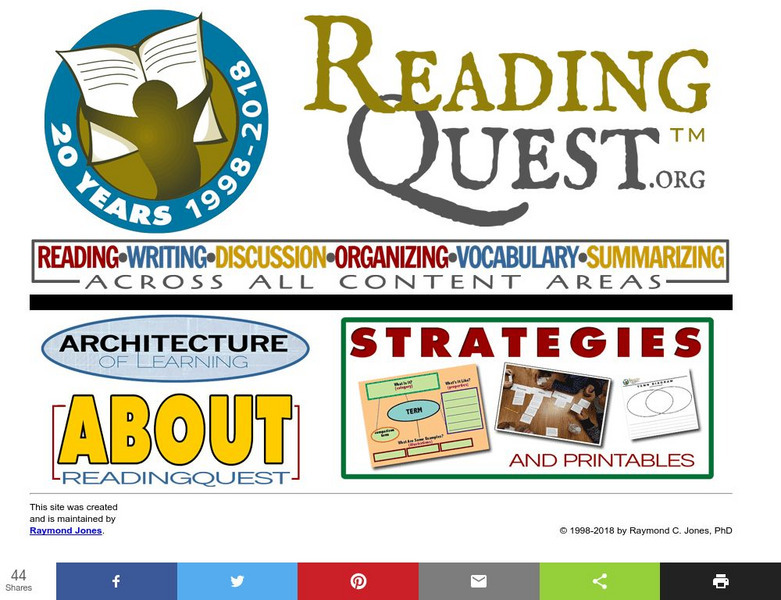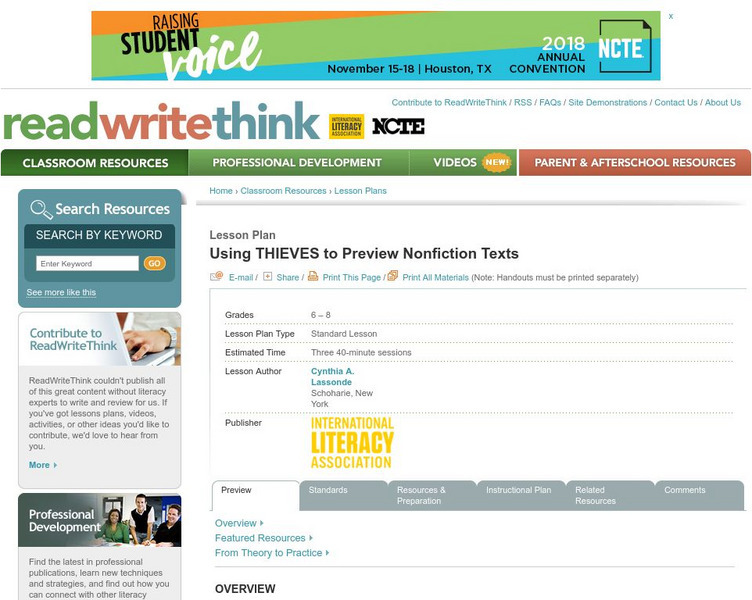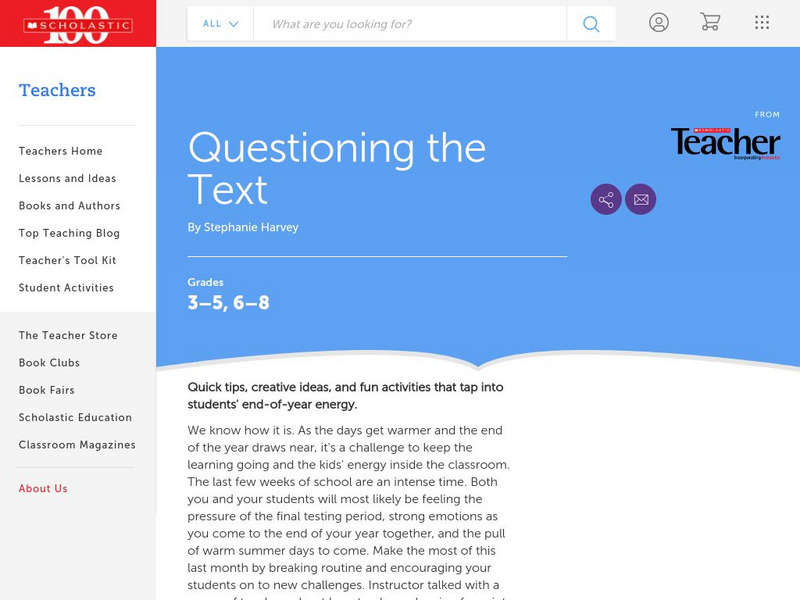EngageNY
TASC Transition Curriculum: Workshop 12
How can opinions slant facts? Workshop participants learn how to examine primary and secondary sources and identify the author's point of view. They also examine how visual art impacts the meaning and rhetoric of sources. Full of...
New York State Education Department
TASC Transition Curriculum: Workshop 4
Why is it important to use precise language? Participants explore this question in the fourth activity in a series of 15 on effective instruction. Perfect for all content areas, the activity promotes appropriate language choice through...
New York State Education Department
TASC Transition Curriculum: Workshop 10
How have educational standards evolved? Educators of adults examine expectations in the 10th workshop out of 15 to better determine how standards have grown. Participants respond to a variety of sample questions to determine how they...
New York State Education Department
TASC Transition Curriculum: Workshop 5
Are video games sports? Pupils investigate this question as well as various nonfiction selections to learn more about claims and the support that defines them. All of the selections mimic the rigor on state tests and encourage close...
EngageNY
TASC Transition Curriculum: Workshop 6
Is a college education necessary for success in today's world? The class investigates the question, along with others at the end of the sixth workshop in a 15-part series. The instructional activity has four parts with multiple...
New York State Education Department
TASC Transition Curriculum: Workshop 13
The six instructional shifts in this workshop definitely move math and science teachers' understanding of instruction. The workshop, 13th out of a series of 15, asks participants to examine sample tests and to look at how the six...
Sophia Learning
Sophia: Reading Strategies: Tutorial
In this slideshow tutorial, students will review different types of reading strategies to promote comprehension of text. The strategies included are the following: making predictions, visualizing, questioning the text, retelling,...
Michigan State University
Michigan State University: Interventions for Reading Strategies: Qar Strategy
This Michigan State University site suggests three question-answer relationships strategies, rather than four, leaving out "author and you." Includes examples of each relationship, steps for teaching, and assessment.
Reading Rockets
Reading Rockets: "Seven Strategies to Teach Text Comprehension" by c.r. Adler
In this article, "comprehension strategies" are explained. Supported by research, these strategies are divided into seven different steps, including the following: monitoring comprehension, metacognition, graphic and semantic organizers,...
Annenberg Foundation
Annenberg Learner: Journey North: Reading Strategies: Use Context Clues to Decipher Words
This reading resource discusses the strategy of using context clues to decipher new words. A list of guiding questions is provided to help students as they use context clues to understand new words.
Polk Brothers Foundation Center for Urban Education at DePaul University
De Paul University: Center for Urban Education: Nonfiction Reading Strategy Assessment [Pdf]
This inventory provides questions to determine the habits that students use when reading nonfiction pieces. This inventory may be used at the beginning of the year or prior to beginning a unit that involves the reading of nonfiction texts.
Annenberg Foundation
Annenberg Learner: Journey North: Reading Strategies: Identify Author's Viewpoint
This reading resource discusses the strategy of identifying an author's viewpoint. A list of guiding questions is provided to help students as they analyze the author's viewpoint.
Annenberg Foundation
Annenberg Learner: Journey North: Reading Strategies: Compare and Contrast Ideas
This reading resource discusses the strategy of comparing and contrasting ideas. Students will learn definitions and explanations for similes, metaphors, and analogies. A list of guiding questions is provided to help students as they...
Other
Reading Quest: Making Sense of Social Studies
Teaching students to read well in areas other than language arts requires teaching and reinforcing the kinds of reading strategies taught here. There are 27 strategies, ranging from brainstorming to word mapping. The site includes PDF...
ReadWriteThink
Read Write Think: Qa Rs to Develop Comprehension & Reflective Reading Habits
Contains plans for three lessons that use the QAR strategy to develop reading comprehension and reflective reading within learners. In addition to objectives and standards, this instructional plan contains links to sites used in the...
ReadWriteThink
Read Write Think: Using Thieves to Preview Nonfiction Texts
Contains plans for three lessons that introduce a nonfiction prereading strategy with the acronym THIEVES, which stands for Title, Headings, Introduction, Every first sentence, Visuals and vocabulary, End Questions, and Summary. In...
Other
Wisconsin Educational Communication Board: Into the Book
This series of videos and interactive activities provide an excellent set of resources for teaching or learning the 8 research based reading strategies provided here. After receiving your "key" you can investigate the features inside and...
SMART Technologies
Smart: Cafe Reading Strategies
In this SMART Exchange lesson, students will learn the CAFE reading strategies. This lesson may be used as an instructional tool for teaching and introducing the various strategies to students.
ReadWriteThink
Read Write Think: Questioning a Comprehension Strategy for Small Group Reading
Contains plans for three lessons about asking the right questions while reading. After the teacher explains the difference between factual and inferential questions, students practice using them in small-group guided reading. In addition...
AdLit
Ad lit.org: Classroom Strategies: Sq3 R: Survey Question Read Recite Review
SQ3R is a comprehension strategy that helps students think about the text they are reading while they're reading. Often categorized as a study strategy, SQ3R helps students "get it" the first time they read a text by teaching students...
Scholastic
Scholastic: Questioning the Text
In this magazine article originally featured in Instructor, the reading strategy called "questioning the text" is explained by the renowned literacy consultant and staff developer, Stephanie Harvey. The steps included for questioning the...
Other
Reading Educator: Question Answer Relationships
Based on the presumption that every teacher shares responsibility for teaching reading, this page offers a brief look at question-answer relationships, as well as suggestions for putting the strategy to use in the classroom.
Austin Independent School District
Austin Independent School District: Questioning the Author [Pdf]
Improve reading comprehension by using the reading strategy of Questioning the Author. Explains the strategy with scripted examples of the strategy in action, ideas for implementation, research behind the strategy, and more.
AdLit
Ad lit.org: Teach the Seven Strategies of Highly Effective Readers
To improve students' reading comprehension, teachers should introduce the seven cognitive strategies of effective readers: activating, inferring, monitoring-clarifying, questioning, searching-selecting, summarizing, and...
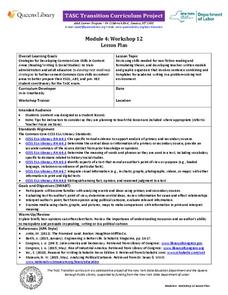
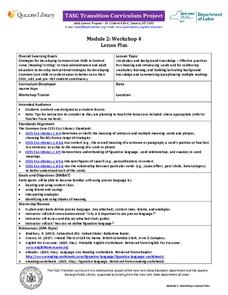


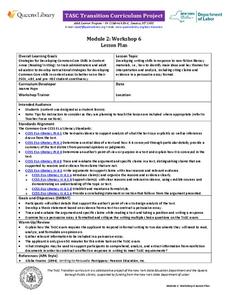
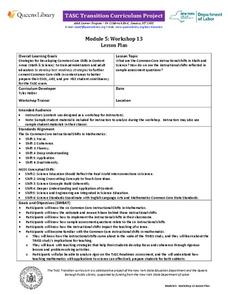



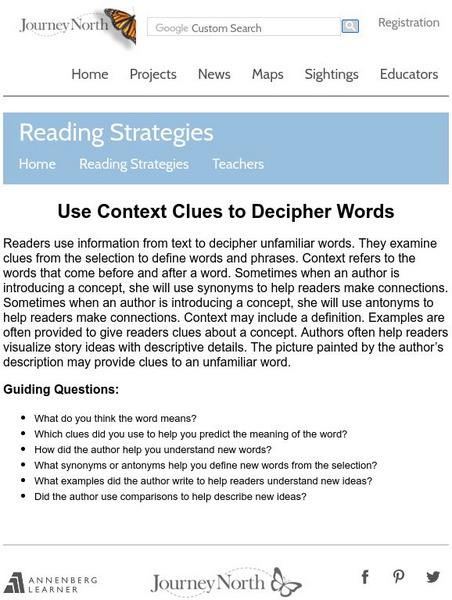
![De Paul University: Center for Urban Education: Nonfiction Reading Strategy Assessment [Pdf] Unknown Type De Paul University: Center for Urban Education: Nonfiction Reading Strategy Assessment [Pdf] Unknown Type](https://d15y2dacu3jp90.cloudfront.net/images/attachment_defaults/resource/large/FPO-knovation.png)


